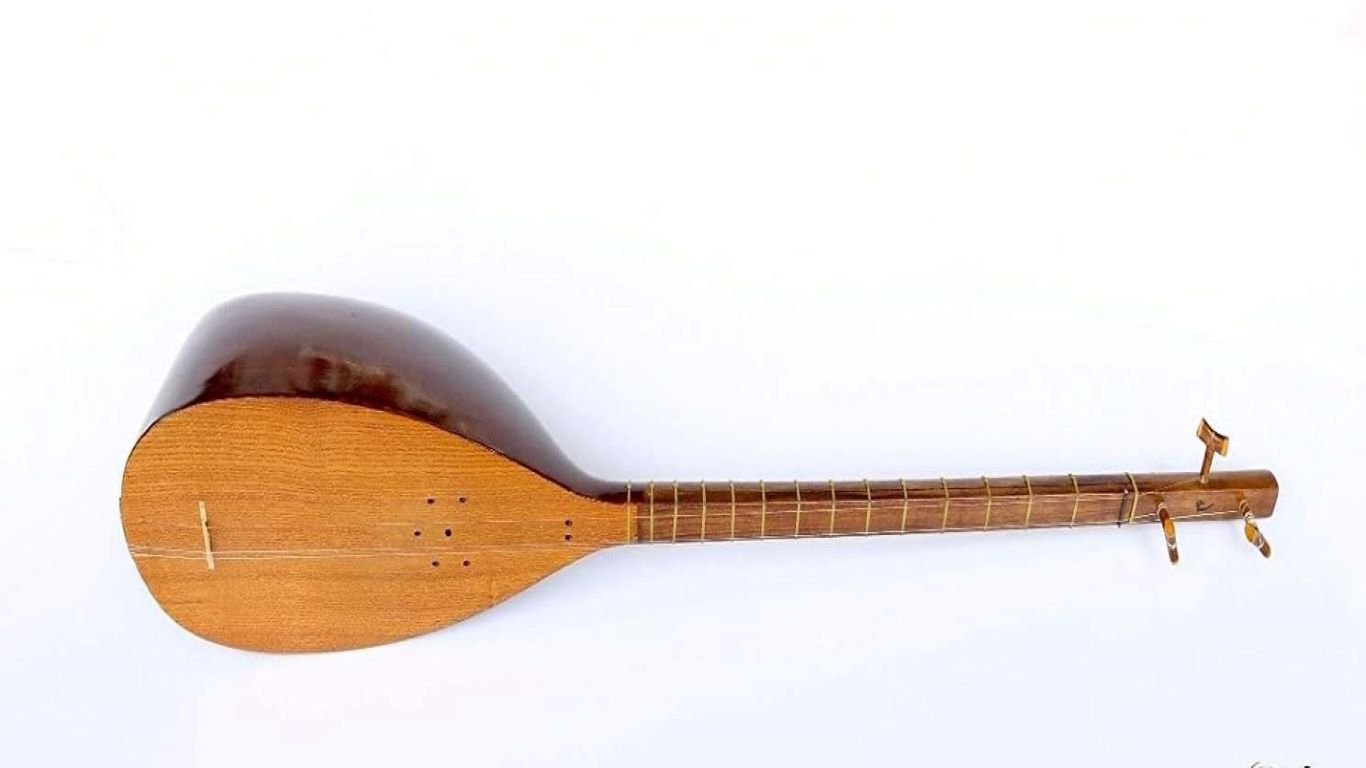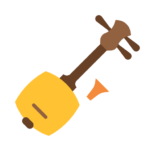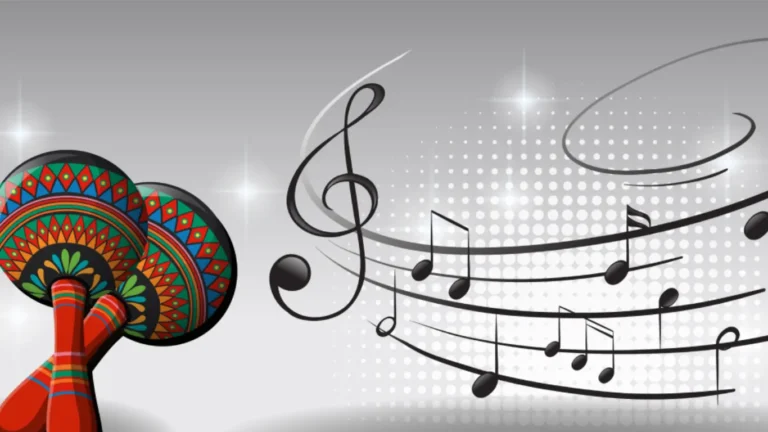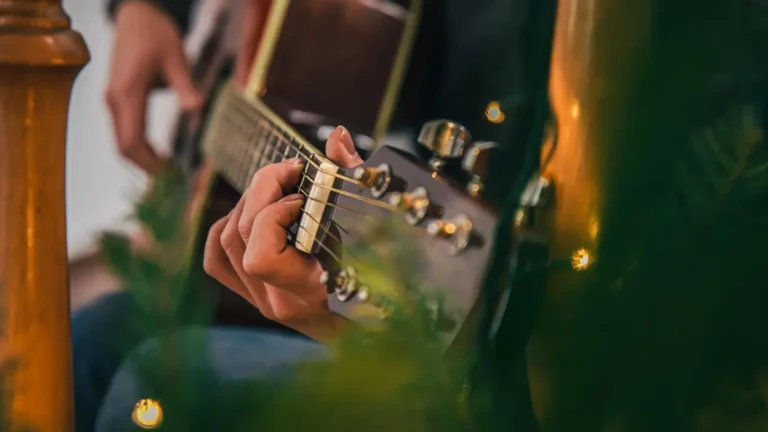Tanbur refers to a long-necked string musical instrument employed in art and folk traditions in Iran, India, Kurdistan, Armenia, Afghanistan, Turkey, Tajikistan, Kazakhstan, and Uzbekistan.
What Is Tanbur?
Tanbur is the origin of every plucked stringed musical instrument with a long neck. It has a pear-shaped belly often carved from a single piece of mulberry wood, a long neck, and fourteen gut frets. Some modern tanbur are formed of bent mulberry wood ribs. The soundboard is also 3-4 millimeters thick and composed of mulberry wood. It features multiple tiny holes for improved board resonance.
Tambour used to have two silk or gut strings tuned in 4th or 5th, comparable to the dotar (meaning two-strung), which is popular in Eastern Iran. In literary literature, it is also called the Tambour of Khorasan. The current Tambour has three strings and a one-octave and two-note range. The lower steel strings are generally tuned in unison from a (flat) to (b) and are fingered together as the melody strings. The top string, constructed of copper or brass and slightly thicker, is tuned in the lower fourth or fifth and serves as a sympathetic string with occasional thumb fingering.
The tambour is one of the few sacred Iranian musical instruments. Tanbur is associated with Kurdish Sufi music of Western Iran, and it is the sole melodic instrument that can be carried to Ahl-e-haq zikr gatherings. Its repertoire is also thought to be based on ancient Persian music. This instrument is currently most commonly utilized in the Kermanshah province.
About Tanbur instrument
Iranian Tambour strings are mounted on a long frame with a bowl-shaped body. Tambour is played with fingers. Setar and Dotar are similar, played by fingers clasped together for strumming.
Tanbur is epic, legendary, and magical and typically used in epics. This instrument has changed names and shapes over time and space. Tanbur’s neck and body are one piece like Setar’s. Tambour has 10–15 frets. Iranian Tambour is played without a pick and has 4 strings. Tambour dates to 1500 B.C. from three statues found in Shoosh ruins.
Persian tanbur instrument went from Iran and Syria to Turkey, Greece, and Egypt. Elliptical body on Egyptian variant. Tamboor was commonly utilized before and during the Sasanid era. Tambour is sometimes used with Daf in mystical circles to accompany Darvishes’ chants and mantras.
How Is Tanbur Sound
How To Play Tanbur?
Tanbur playing is quite similar to baglama or saz playing. If you’ve played saz before, you could find it much easier to play the tanbur. To begin learning how to play the Persian tanbur instrument, you must first learn how to hold it. There are several ways to keep the tanbur, but one of the most common is to press the round head of the Tambour between your knees.
To get a sound out of your tanbur, push one of the three strings and use your dominant hand to manipulate the bow that will be utilized to produce a particular note out of your tanbur. Try not to press the strings too hard, as this could injure the bow and the strings, potentially causing problems later. We propose you take lessons to learn how to play the Tambour professionally.
Types Of Tanbour Instrument
Kurdish Tanbur
Nowadays, Kermanshahan tanbur is played across Iran and is referred to simply as “tanbur” throughout Iran. Kurdish Tambour is primarily produced in Kermanshah (in Kurdistan Province), Kurdistan Province, and Lorestan. Kermanshahan tanburs are more well-known, accepted, and custom-made in Kermanshah’s Goran Region and Sahneh. The Tambour is now the musical instrument utilized in Ahl-e Haqq (Yarsani) rites, and tembûrs are revered as sacred objects by practitioners.
There is also a Taleshi Tamboor in the small district of Talesh in Iran’s north and a Tanburak (Tanburg) in Balochistan in Iran’s southeast. However, Kermanshahan Tambour is the most common and well-known Tamboor in Iran.
The Kurdish Tambour has a slender pear-shaped body comprised of 7 to 10 distinct ribs bonded together. Its soundboard is often constructed of mulberry wood with patterned holes burned into it. The long neck is detachable and has three metal strings, one double. The tune is played on the double strings using a unique three-finger right-hand method. Kurdish Tamboor is related to Western Iranian Kurdish Sufi music.
It has a height of 80 cm and a width of 16 cm. The resonator is pear-shaped and fashioned of mulberry wood, either in a single piece or in many carves. The wood neck has fourteen frets placed on a semi-tempered chromatic scale. It contains two steel strings that may be tuned to the fifth, fourth, or second intervals. The upper string could be double-coursed.
Central Asia
The Afghan Tambour (or tambur) is primarily played in northern Afghanistan, particularly in Mazar Sharif and Kabul. The Afghan Tambour used to have a broad, hollow neck and a gourd-like body, but they now resemble the Herati dutar, which has a rounder body contour with a hollow neck. It is comparable to the Tajik setor. The body is composed of one piece of (mulberry) wood, and the neck is separate, with some design on the neck. It contains three courses of metal strings (either single or double). The Afghan Tambour is played with a wire finger plectrum, similar to the Tambour and sitar. Music can accompany singing and dancing or (less frequently) play traditional ghazals. Tambour from Afghanistan has sympathetic strings.
The Tajik/Uzbek Tambour features four metal strings that connect to a piece of wood at the body’s edge via a small loose bridge. It is usually played with the index finger holding a wire plectrum. Its body is composed of mulberry wood that has been hollowed out, and the front is also made of mulberry wood. Its neck is frequently embellished with inlay bone or white plastic. It is also possible to play with a bow.
In Sinkiang, the Uyghur Tambour is performed. It features a long (almost 5 foot) neck with five friction pegs. It features five metal strings three courses, with the first (fingered) and the third double.

Turkish Tanbour
The Turkish Tambour features a long, thin neck and a body of 20 to 25 thin wooden ribs arranged in a circular shape. It comprises six metal strings (three pairs).
In Turkey, the yayl tanbur is also popular. It has a long, fretted neck and a spherical metal or wooden soundbox, often covered on the front with a skin or acrylic head similar to a banjo.
Conclusion
Tambour lessons by Morteza Rostami Tanbour Instructor, are available online, privately, and in groups at Navasaz Academy. First, schedule a free consultation to sign up for Online Tamboor classes. During this session, you can speak with the management personally and ask questions regarding the course, techniques, discounts, or Iranian instruments. After this session, you can schedule weekly lessons.
 String Instr
String Instr Percussion Instr
Percussion Instr Wind Instr
Wind Instr Keyboard Instr
Keyboard Instr Tools
Tools Books
Books

